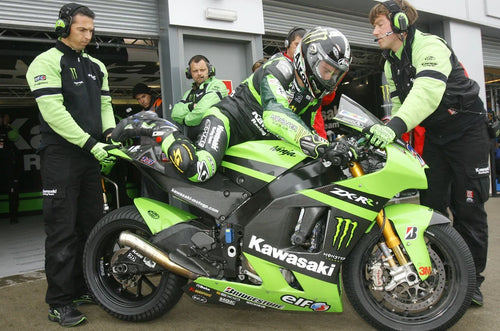
704 mots | Temps de lecture : 3 minute(s)
How to choose your motorcycle helmet: the complete guide for 2025
A motorcycle helmet is the most important piece of safety equipment you can have. Whether you're a beginner or an experienced rider , choosing the right helmet is crucial. It must combine protection , comfort , ventilation , and visibility . Here's everything you need to know to choose your motorcycle helmet in 2025 and avoid common mistakes that could compromise your safety.
1. Why choosing the right helmet is vital
Helmets are mandatory on the road in France and in most other countries. Beyond the legal aspect, they protect your head against:
- Head injuries in the event of a fall
- Projections (stones, insects, rain)
- Wind and cold , limiting fatigue and the risk of error
- Excessive aerodynamic noise , which can damage hearing in the long term
A good helmet can save your life . Invest in a suitable , quality , approved model, and replace it every 5 to 7 years , even if you haven't been in an accident.
2. Know the types of helmets
- Full-face helmet : maximum protection, ideal for road/motorway.
- Modular helmet : liftable chin bar, practical for city/motorway use (remember the dual P/J approval ).
- Open-face helmet : lightweight and ventilated, limited facial protection.
- Crossover helmet : jet + removable chin bar, versatile.
- Off-road/adventure helmet : long visor, extreme ventilation, goggle compatible.
Choose according to your main use : urban, touring, travel, off-road, sporty, etc.
3. Check the approval
In 2025, the standard in force is ECE 22.06 (replacing 22.05). It requires:
- Multi-point impact tests
- Rotation tests to limit cervical injuries
- Specific tests of visors and chin guards
Make sure you have the CE label , the P or P/J mark, and check the SHARP rating if available.
4. Choose the right size
- Measure your head circumference just above your eyebrows.
- Compare with the brand chart .
- When trying it on, the helmet should be slightly tight without any sore spots.
The foams then settle : a new “tight” helmet becomes comfortable.
5. Consider comfort and amenities
- Weight : 1300 – 1700 g depending on the type
- Effective ventilation to prevent fog and heat
- Internal sunscreen for glare
- Removable and washable interior
- Bluetooth compatibility (GPS, music, intercom)
6. Think about active safety
- Reflective strips required
- Some helmets incorporate LEDs or fall detectors
Seeing and being seen better drastically reduces the risk of accidents.
7. Materials: shell and cap
- Polycarbonate : affordable, heavier, lasts 4-5 years
- Fiberglass : lighter, lasts 7-10 years
- Carbon : ultra-light, ultra-strong, expensive
- Multi-fiber composite : strength/lightness compromise
A fiber or carbon helmet costs more but offers durability and comfort .
8. Budget: how much to plan?
- Entry level : €100 – €200
- Mid-range : €250 – €500
- High-end : €600 – €1,200
Always prioritize fit , approval and comfort before style.
9. Maintain and replace your helmet
- Clean the interior with warm water + mild soap
- Avoid excessive heat (trunk in direct sunlight)
- Replace after any major shock , even invisible
Conclusion
Choosing your motorcycle helmet is essential for riding protected and serenely. In 2025, the range is vast: styles, materials, connected technologies. Test them , check the approval and prioritize safety and comfort . Your helmet is your best ally : make it a reliable companion for all your adventures on two wheels.


